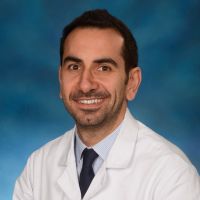Clinical Advances in Reconstructive Surgery: Innovations and Outcomes for Improved Patient Care
A special issue of Journal of Clinical Medicine (ISSN 2077-0383). This special issue belongs to the section "General Surgery".
Deadline for manuscript submissions: 31 January 2025 | Viewed by 676
Special Issue Editor
Special Issue Information
Dear Colleagues,
This Special Issue, entitled "Clinical Advances in Reconstructive Surgery: Innovations and Outcomes for Improved Patient Care", focuses on the latest advancements in reconstructive surgery, with a strong emphasis on their clinical applications and impact on patient care. This Special Issue aims to provide a comprehensive overview of innovative techniques, technologies, and approaches that have significantly improved surgical outcomes and patient satisfaction.
This Special Issue aims to feature articles highlighting advancements in various areas of reconstructive surgery, including, but not limited to, cleft lip repair, breast reconstruction, facial reconstruction, hand surgery, and burn reconstruction. The articles within this Special Issue will delve into topics such as minimally invasive procedures, patient-specific treatment planning, advances in anesthesia and pain management, and the integration of regenerative medicine in reconstructive surgery.
Dr. Rami S. Kantar
Guest Editor
Manuscript Submission Information
Manuscripts should be submitted online at www.mdpi.com by registering and logging in to this website. Once you are registered, click here to go to the submission form. Manuscripts can be submitted until the deadline. All submissions that pass pre-check are peer-reviewed. Accepted papers will be published continuously in the journal (as soon as accepted) and will be listed together on the special issue website. Research articles, review articles as well as short communications are invited. For planned papers, a title and short abstract (about 100 words) can be sent to the Editorial Office for announcement on this website.
Submitted manuscripts should not have been published previously, nor be under consideration for publication elsewhere (except conference proceedings papers). All manuscripts are thoroughly refereed through a single-blind peer-review process. A guide for authors and other relevant information for submission of manuscripts is available on the Instructions for Authors page. Journal of Clinical Medicine is an international peer-reviewed open access semimonthly journal published by MDPI.
Please visit the Instructions for Authors page before submitting a manuscript. The Article Processing Charge (APC) for publication in this open access journal is 2600 CHF (Swiss Francs). Submitted papers should be well formatted and use good English. Authors may use MDPI's English editing service prior to publication or during author revisions.
Keywords
- reconstructive surgery
- clinical advances
- innovations
- surgical outcomes
- patient care
- cleft lip repair
- breast reconstruction
- facial reconstruction
- hand surgery
- burn reconstruction
- minimally invasive procedures
- patient-specific treatment planning
- anesthesia and pain management
- regenerative medicine
Benefits of Publishing in a Special Issue
- Ease of navigation: Grouping papers by topic helps scholars navigate broad scope journals more efficiently.
- Greater discoverability: Special Issues support the reach and impact of scientific research. Articles in Special Issues are more discoverable and cited more frequently.
- Expansion of research network: Special Issues facilitate connections among authors, fostering scientific collaborations.
- External promotion: Articles in Special Issues are often promoted through the journal's social media, increasing their visibility.
- e-Book format: Special Issues with more than 10 articles can be published as dedicated e-books, ensuring wide and rapid dissemination.
Further information on MDPI's Special Issue polices can be found here.






